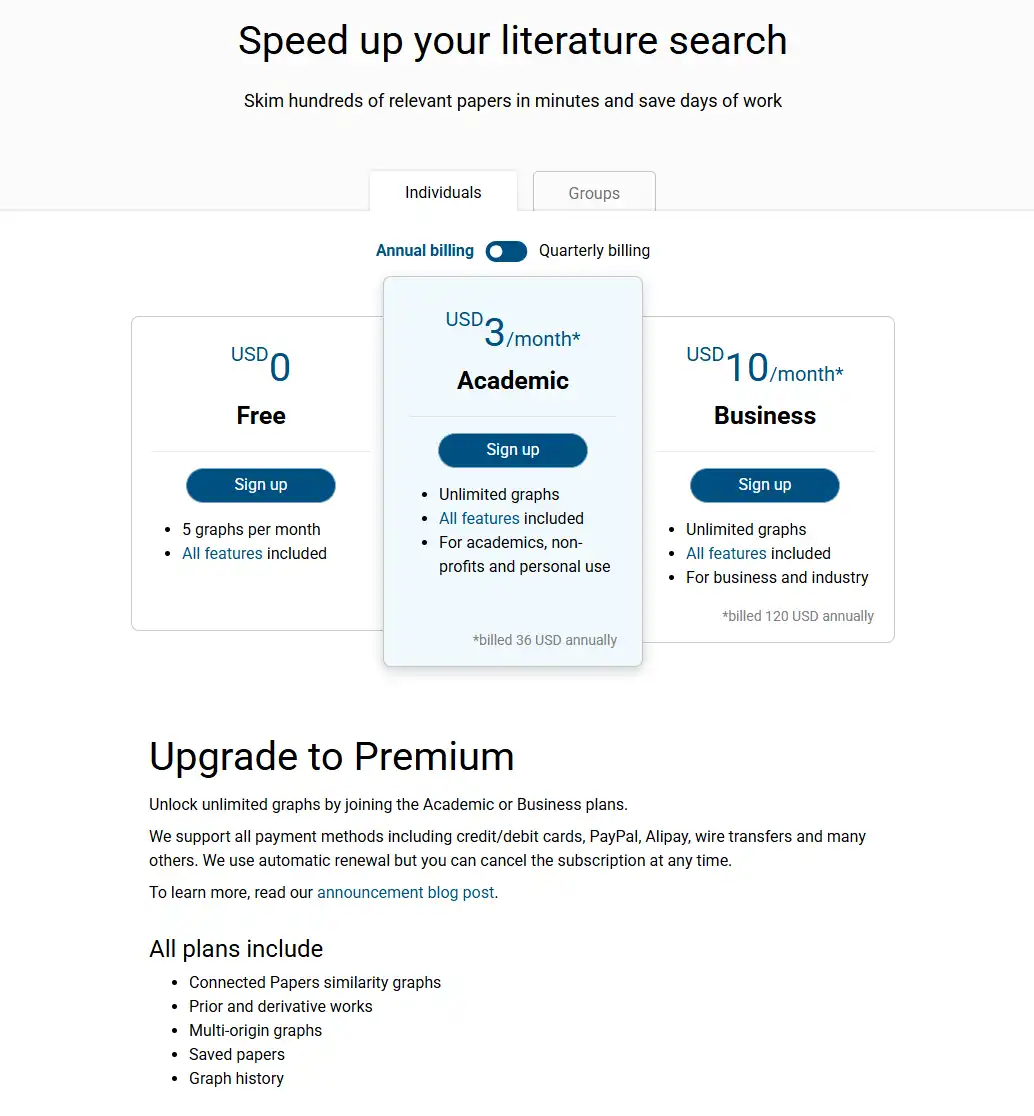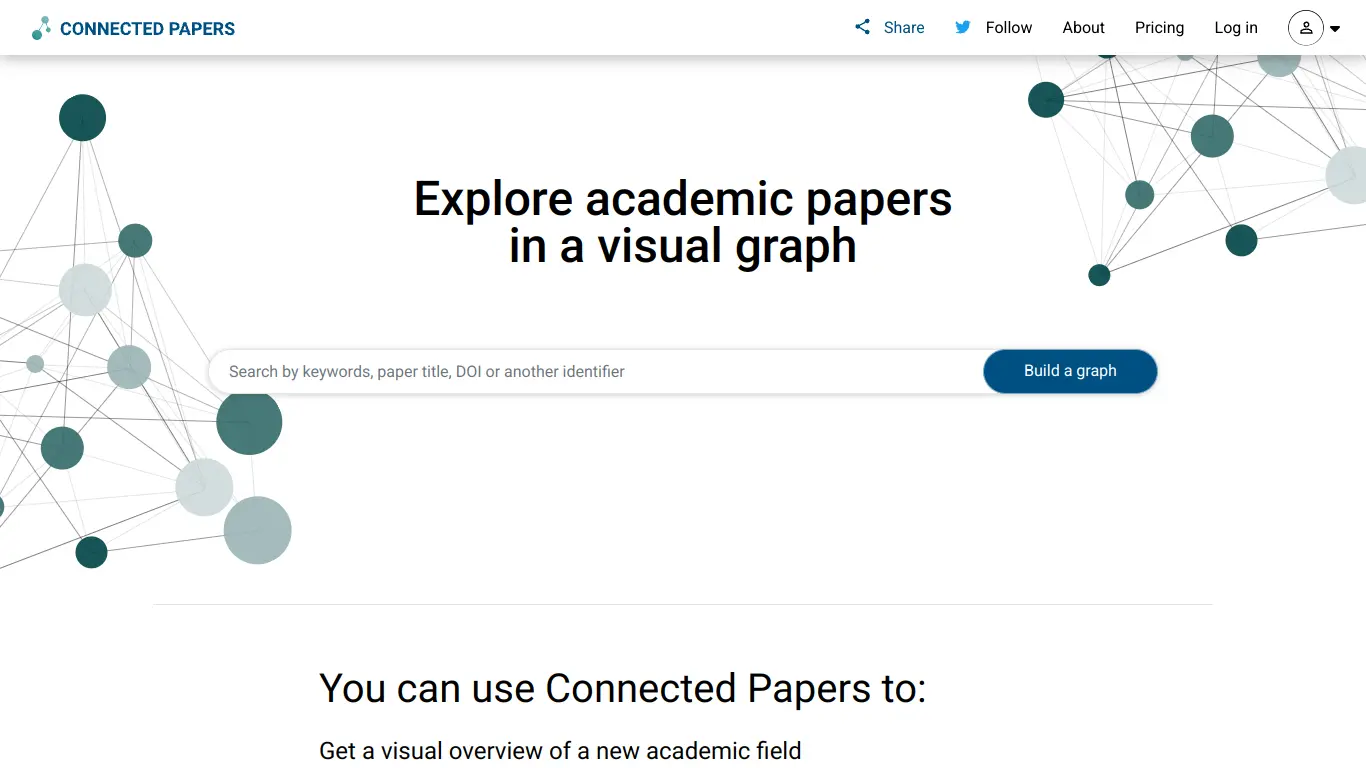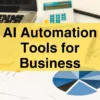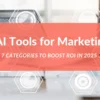Connected Papers visualizes academic literature as interactive graphs, helping researchers discover relevant papers and understand research landscapes.
Ever stared at a mountain of research papers, wondering how they all fit together? You’re not alone. Academic research can feel like navigating a labyrinth without a map, especially when venturing into new territory. Between finding relevant papers, understanding their relationships, and discovering seminal works in a field, the process can be overwhelming and time-consuming.
That’s where Connected Papers comes in – a visual tool designed to help researchers, students, and academics navigate the complex web of scientific literature with clarity and efficiency.
Introduction to Connected Papers
What is Connected Papers and its Purpose?
Connected Papers is a unique visual tool that helps researchers explore academic literature through interactive graph visualizations. Unlike traditional literature search engines that simply return lists of results, Connected Papers builds networks of related papers based on similarity and citation relationships.
The tool’s primary purpose is to provide visual context for academic research, helping users discover relevant papers they might have missed, understand the connections between publications, and gain insights into the evolution of research topics over time.
By transforming the typically linear research process into an interactive visual experience, Connected Papers aims to make literature review more intuitive, comprehensive, and efficient.
Who is Connected Papers Designed For?
Connected Papers serves a diverse audience in the academic and research communities:
- Academic researchers looking to explore new fields or deepen their understanding of their specialty
- PhD students conducting literature reviews or mapping out research landscapes
- University professors seeking to stay updated on developments in their field
- Graduate students working on theses or dissertations
- Research librarians assisting with comprehensive literature searches
- Industry researchers exploring academic foundations for applied work
- Journal editors tracking research trends and identifying potential reviewers
Whether you’re starting a new research project, writing a literature review, or simply trying to understand the intellectual heritage of a specific paper, Connected Papers provides valuable context and connections.
Getting Started with Connected Papers: How to Use It
Using Connected Papers is straightforward, even for first-time users:
- Visit the website: Navigate to connectedpapers.com
- Enter a seed paper: Search for a paper by title, DOI, URL, or author names. This will be your starting point.
- Generate a graph: The system will create a visualization showing papers related to your seed paper.
- Explore the network: Click on nodes (papers) to see details and relationships. Papers are positioned based on similarity – closer papers are more related in content.
- Use additional features: Filter by year, explore citation relationships, and save graphs for future reference.
The interface is intuitive, with helpful tooltips guiding you through the process. Within minutes, you can generate a meaningful map of research related to your area of interest.
Connected Papers’ Key Features and Benefits
Core Functionalities of Connected Papers
Connected Papers offers several powerful features that transform how researchers navigate academic literature:
🔍 Graph View: The centerpiece of the tool is its visual network representation, where papers appear as nodes positioned according to content similarity.
📚 Prior Works: A specialized view highlighting papers that influenced your seed paper (based on citations).
🌱 Derivative Works: Shows papers that built upon your seed paper, helping you trace its influence.
⏰ Timeline View: Visualizes papers chronologically, helping you understand the evolution of research over time.
🔄 Builder Mode: Allows you to construct custom graphs by adding multiple seed papers.
📋 Abstract Previews: Quick access to paper abstracts without leaving the interface.
🔗 Direct Links: Easy access to full papers through DOI links or Google Scholar.
💾 Graph Saving: Save and share your research maps for collaboration or future reference.
Advantages of Using Connected Papers
The tool offers numerous benefits that traditional literature search methods can’t match:
- Discovers hidden gems: Uncovers relevant papers that keyword searches might miss, particularly when papers use different terminology for similar concepts.
- Visualizes research landscapes: Provides immediate visual context for understanding how papers relate to each other.
- Saves time: Significantly speeds up literature review by mapping relationships automatically.
- Reduces cognitive load: The visual approach makes it easier to process large amounts of research information.
- Improves comprehensiveness: Helps ensure you haven’t missed important works in your field.
- Facilitates interdisciplinary research: Makes it easier to bridge different research domains by visualizing connections.
- Supports serendipitous discovery: The visual nature encourages exploration that can lead to unexpected but valuable research connections.
Main Use Cases and Applications
Researchers use Connected Papers in diverse scenarios:
| Use Case | Description | Benefit |
|---|---|---|
| Literature Reviews | Map out the key papers in a research area | More thorough, less likely to miss important works |
| Research Planning | Identify research gaps and opportunities | Better positioning of new research projects |
| Conference Preparation | Quickly understand recent developments | More informed discussions with colleagues |
| Thesis Writing | Comprehensive coverage of relevant literature | Stronger theoretical foundations |
| Peer Review | Understanding a paper’s position in the literature | More insightful and contextual reviews |
| Grant Writing | Demonstrating knowledge of the field | More compelling research proposals |
| Teaching Preparation | Creating reading lists that show relationships | Better structured course materials |
Exploring Connected Papers’ Platform and Interface
User Interface and User Experience
Connected Papers features a clean, intuitive interface designed to minimize learning curves while maximizing research productivity:
The Graph View dominates the interface, with nodes (papers) sized according to their citation count. Lines connect related papers, with thicker lines indicating stronger relationships. Color coding helps distinguish between older and newer papers.
The Information Panel appears when you select a paper, displaying:
- Title and authors
- Abstract
- Publication year and venue
- Citation count
- Direct links to the full paper
Control Panel features include:
- Year filtering sliders
- View options (Graph, Prior, Derivative)
- Search functionality within the graph
- Export and sharing options
The interface follows a logical workflow that guides users from paper selection to exploration without unnecessary complexity. Hover tooltips provide contextual help, making the learning process smooth even for less tech-savvy researchers.
Platform Accessibility
Connected Papers works across multiple platforms and devices:
- Web-based: No installation required, works on all major browsers
- Mobile responsive: Functions on tablets and smartphones, though the experience is optimized for larger screens
- Keyboard navigation: Supports keyboard shortcuts for accessibility
- Screen reader compatibility: Basic support for visually impaired users
The platform supports multiple citation formats and integrates with common research tools like Zotero and Mendeley for exporting references.
Connected Papers Pricing and Plans
Subscription Options
Connected Papers offers tiered pricing to accommodate different user needs:

The premium features are particularly valuable for researchers conducting extensive literature reviews or collaborative research teams.
Connected Papers Reviews and User Feedback
Pros and Cons of Connected Papers
Based on user feedback across academic forums, social media, and review sites, here’s how Connected Papers stacks up:
Pros:
- 👍 Intuitive visual interface that makes research connections immediately apparent
- 👍 Discovers relevant papers that would be missed through keyword searches
- 👍 Significant time-saver for literature reviews
- 👍 Regular updates and improvements to the platform
- 👍 Responsive customer support
- 👍 Works well across different academic disciplines
Cons:
- 👎 Coverage can be limited for very recent papers (due to citation lag)
- 👎 Some niche fields have less comprehensive coverage
- 👎 Occasional loading delays with very large graphs
- 👎 Limited customization options for visualizations
- 👎 Free tier restrictions can be limiting for serious research
User Testimonials and Opinions
Researchers across disciplines have shared their experiences with Connected Papers:
“Connected Papers completely transformed my literature review process. What would have taken weeks of manual searching was accomplished in days, with better results.” — PhD Candidate in Neuroscience
“As someone researching across disciplines, this tool has been invaluable for finding connections between fields that use different terminology.” — Interdisciplinary Researcher
“I recommend Connected Papers to all my graduate students. It helps them quickly grasp the landscape of research in our field.” — Professor of Computer Science
“The visual nature of the tool helped me understand the evolution of my research area in ways that traditional searches couldn’t.” — Postdoctoral Researcher in Economics
Common themes in user feedback include appreciation for the visual approach, time savings, and discovery of papers that would otherwise have been missed through traditional search methods.
Connected Papers Company and Background Information
About the Company Behind Connected Papers
Connected Papers was founded in 2019 by a team of researchers who experienced firsthand the challenges of navigating scientific literature. The founding team includes:
- Alex Tarnavsky – A computer scientist with background in machine learning and network analysis
- Vedant Misra – AI researcher with experience in natural language processing
- Eddie Smolyansky – Software engineer focused on data visualization
The company began as a side project born from the founders’ own research frustrations and quickly gained traction in academic communities after its public launch in 2020.
Based in Cambridge, Massachusetts, the company maintains a lean team focused on development and research partnerships. They’ve collaborated with several academic institutions to refine their algorithms and expand coverage across disciplines.
Connected Papers has secured seed funding from both venture capital sources interested in research tools and academic grants supporting innovation in scientific discovery.
Their mission statement emphasizes “making the world’s research more accessible and connected through visual exploration tools that enhance discovery and understanding.”
Connected Papers Alternatives and Competitors
Top Connected Papers Alternatives in the Market
Several tools offer functionality that overlaps with Connected Papers, each with its own approach:
- CitationGecko – A similar visual tool focused specifically on citation networks rather than content similarity.
- VOSviewer – More complex visualization software for bibliometric analysis, popular in academia but with a steeper learning curve.
- Litmaps – Combines visual mapping with project management features for research teams.
- Inciteful – Offers citation path finding and paper discovery with some unique algorithmic approaches.
- ResearchRabbit – Provides literature mapping with collaborative features and collection management.
- Semantic Scholar – Less visual but offers powerful AI-based paper recommendations and filters.
- CiteSpace – A comprehensive tool for visualizing trends and patterns in scientific literature, popular in scientometrics.
Connected Papers vs. Competitors: A Comparative Analysis
| Feature | Connected Papers | CitationGecko | VOSviewer | Litmaps | Semantic Scholar |
|---|---|---|---|---|---|
| Primary Focus | Content similarity & citations | Citation networks | Bibliometric analysis | Research workflows | AI-powered search |
| Learning Curve | Low | Low | High | Medium | Low |
| Visualization Quality | Excellent | Good | Excellent | Very Good | Limited |
| Free Tier | Yes (limited) | Yes | Yes (full) | Yes (limited) | Yes (full) |
| Collaboration | Limited | No | No | Yes | Limited |
| Coverage | Good | Good | Excellent | Good | Excellent |
| Export Options | Several | Limited | Many | Several | Limited |
| Updates | Regular | Occasional | Regular | Regular | Frequent |
Connected Papers distinguishes itself with its user-friendly interface and focus on content similarity, not just citation relationships. While VOSviewer offers more analytical depth for bibliometric experts, and Litmaps provides better collaboration tools, Connected Papers hits a sweet spot of accessibility and powerful visualization that makes it particularly valuable for individual researchers.
Connected Papers Website Traffic and Analytics
Website Visits Over Time
Connected Papers has shown consistent growth in user engagement since its launch:
- Monthly visitors: ~150,000 (as of late 2023)
- Annual growth rate: Approximately 35-40%
- Page views per session: 4.7 on average
- Average session duration: 8.3 minutes
Traffic peaks typically coincide with academic calendars, with notable increases during literature review seasons (September-October and January-February).
Geographical Distribution of Users
Connected Papers has a truly global user base, reflecting the international nature of academic research:
- United States: 27%
- United Kingdom: 11%
- Germany: 9%
- China: 8%
- India: 7%
- Canada: 6%
- Australia: 5%
- Japan: 4%
- France: 4%
- Other: 19%
The tool has particularly strong adoption in research-intensive universities across North America and Europe.
Main Traffic Sources
Users discover Connected Papers through various channels:
- Direct traffic: 35% (indicating strong brand recognition)
- Organic search: 28% (primarily through research-related queries)
- Academic referrals: 18% (university websites, library guides)
- Social media: 10% (mainly Twitter/X and LinkedIn)
- Referrals from other tools: 9% (Google Scholar, research platforms)
Word-of-mouth referrals within academic communities have been crucial to the platform’s growth, with many universities now including Connected Papers in their research methodology resources.
Frequently Asked Questions about Connected Papers (FAQs)
General Questions about Connected Papers
Q: What is Connected Papers and how does it work?
A: Connected Papers is a visual tool that helps researchers discover and understand academic literature. It works by analyzing citation patterns and textual similarity between papers to create interactive visualizations of research networks.
Q: Is Connected Papers suitable for all academic fields?
A: Yes, Connected Papers works across disciplines, though coverage may vary. It has strong coverage in computer science, medicine, biology, physics, and social sciences, with growing coverage in humanities.
Q: How up-to-date is the database?
A: Connected Papers regularly updates its database. However, very recent papers (published within the last few months) may have limited connections due to citation lag in academic publishing.
Feature Specific Questions
Q: How accurate are the paper relationships shown?
A: The relationships are based on a combination of citation patterns and content similarity algorithms. While generally accurate, they represent probabilistic relationships rather than definitive categorizations.
Q: Can I export my graphs for publications or presentations?
A: Yes, Connected Papers allows you to export visualizations in various formats including PNG, SVG, and PDF. Premium users have access to higher resolution exports suitable for publications.
Q: Does Connected Papers support languages other than English?
A: While the interface is in English, the tool can process papers in multiple languages. However, cross-language connections may be less comprehensive than within-language connections.
Pricing and Subscription FAQs
Q: Is there a student discount available?
A: Yes, Connected Papers offers educational discounts for students and faculty with verified academic emails, typically 50% off premium plans.
Q: Can I share my premium account with colleagues?
A: Individual premium accounts are for single users. For team use, Connected Papers offers team plans with shared workspaces and collaboration features.
Q: Is there a trial period for premium features?
A: Yes, new users can access a 14-day trial of premium features to evaluate whether the additional capabilities meet their research needs.
Support and Help FAQs
Q: What should I do if I find errors in paper information?
A: Connected Papers provides a feedback mechanism within the interface to report inaccuracies in paper metadata, which are typically addressed within 1-2 weeks.
Q: How can I get help using the tool?
A: Connected Papers offers tutorial videos, a comprehensive help center, and email support. Premium users receive priority support with faster response times.
Q: Can I suggest new features?
A: Yes, Connected Papers actively encourages feature requests through their feedback form and regularly implements user suggestions in updates.
Conclusion: Is Connected Papers Worth It?
Summary of Connected Papers’ Strengths and Weaknesses
Strengths:
- 💪 Intuitive visual interface that transforms how researchers navigate literature
- 💪 Powerful discovery capabilities that surface relevant papers missed by keyword searches
- 💪 Significant time savings for literature reviews and research planning
- 💪 Regular platform improvements based on user feedback
- 💪 Accessible learning curve that works for researchers at all technical skill levels
Weaknesses:
- 🔍 Coverage limitations for very recent publications
- 🔍 Free tier restrictions that may frustrate serious researchers
- 🔍 Some disciplines have more comprehensive coverage than others
- 🔍 Advanced bibliometric analysis requires additional tools
- 🔍 Limited customization options for visualization aesthetics
Final Recommendation and Verdict
Connected Papers stands out as an exceptional tool that addresses a fundamental challenge in academic research: making sense of complex literature landscapes. Its visual approach transforms what was once a tedious, linear process into an intuitive, exploratory experience.
For students embarking on thesis research, faculty exploring new research directions, or interdisciplinary researchers bridging fields, Connected Papers delivers tremendous value by revealing connections and important works that might otherwise be missed.
The free tier provides enough functionality to evaluate the tool’s benefits, though serious researchers will likely find the premium features worth the investment, particularly for extensive literature reviews or ongoing research projects.
Verdict: Highly recommended for academics, researchers, and students who want to enhance their literature review process, save time, and gain deeper insights into their research fields. Connected Papers isn’t just another research tool—it’s a different way of seeing and understanding academic literature that can transform how research is conducted.
Whether you’re drowning in research papers or just beginning your academic journey, Connected Papers offers a valuable compass to navigate the vast ocean of scientific literature more effectively.





















